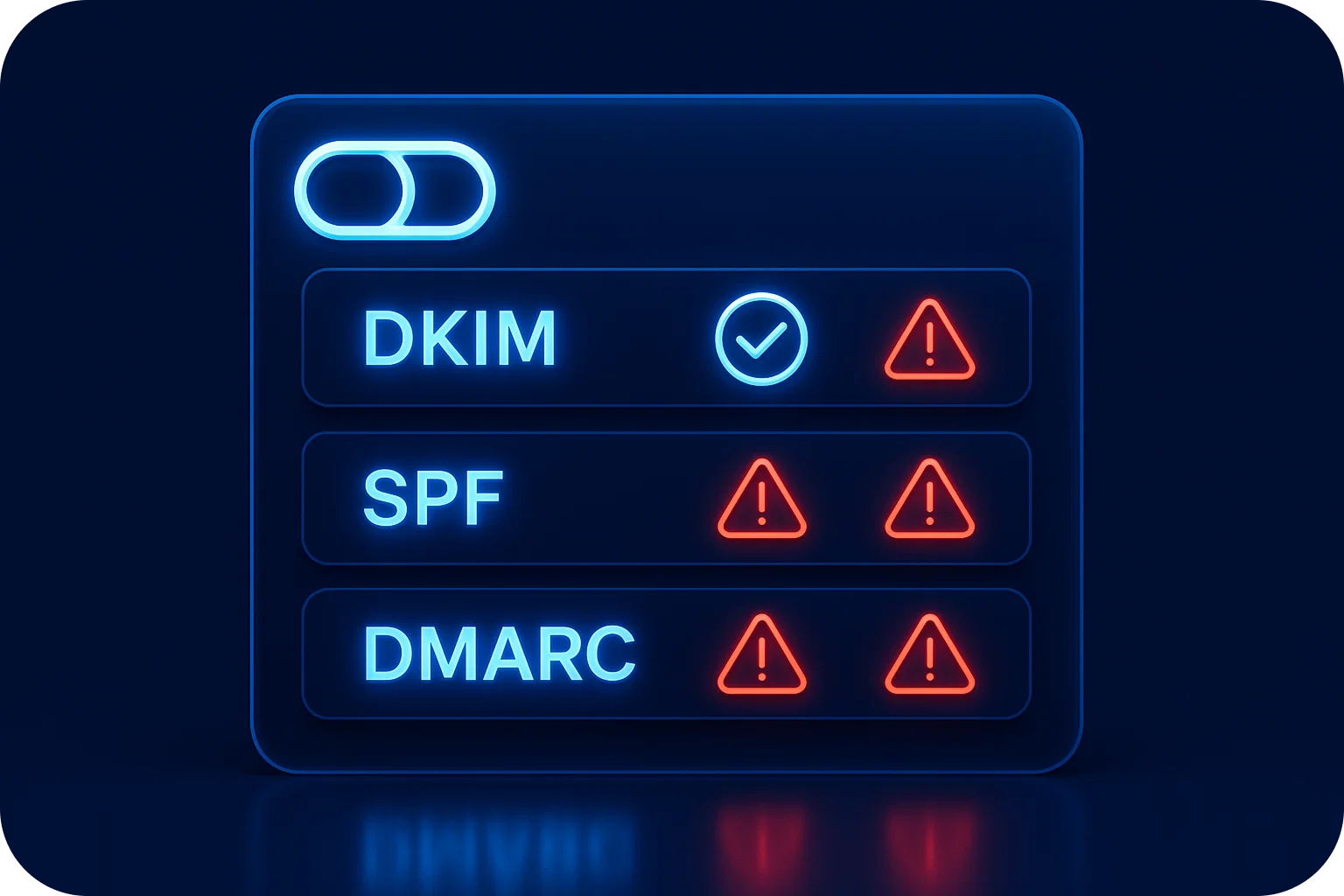The Multi-Inbox Strategy: How to Coordinate 50+ Accounts Without Chaos

Scaling cold email outreach from 5 inboxes to 50+ feels like jumping from a bicycle to piloting a commercial aircraft. What worked with a handful of accounts, manual monitoring, simple spreadsheets, and ad-hoc rotations crumbles under the weight of enterprise-level operations. Yet thousands of sales teams, lead generation agencies, and growth-focused startups successfully coordinate dozens or even hundreds of inboxes daily without descending into chaos.
The difference? A systematic multi-inbox strategy built on proven infrastructure, intelligent rotation protocols, and centralized management. This guide reveals exactly how to scale cold email operations to 50+ accounts while maintaining high deliverability, workflow efficiency, and team sanity.
Why Multi-Inbox Strategies Matter for Scalable Outreach
Before diving into coordination tactics, let's establish why managing multiple inboxes correctly is non-negotiable for serious cold email programs.
Deliverability protection through volume distribution. Email service providers flag accounts sending abnormally high volumes. By distributing your outreach across multiple inboxes, you keep each account within safe sending limits (typically 20-50 emails per day per inbox), dramatically improving inbox placement rates.
Domain reputation isolation. When you operate multiple domains with multiple inboxes per domain, a deliverability issue with one account doesn't sink your entire operation. This isolation creates resilience; if one domain gets flagged, your other 10+ domains continue performing.
Increased total sending capacity. Simple math: 50 inboxes sending 30 emails daily equals 1,500 touches per day or 45,000 per month. This volume is impossible to handle from a single inbox without triggering spam filters.
A/B testing at scale. Multiple inboxes enable sophisticated testing of subject lines, messaging angles, and sending patterns across statistically significant sample sizes, accelerating your learning curve.
The Foundation: Infrastructure Setup for 50+ Inboxes
Coordination begins with proper infrastructure. Attempting to manage dozens of inboxes without the right foundation guarantees chaos.
Domain Architecture
Structure your domain portfolio strategically. For 50 inboxes, you'll typically need 10-17 domains (3-5 inboxes per domain is the sweet spot). Use variations of your primary domain rather than completely unrelated domains; this maintains brand consistency while providing necessary separation.
Example structure: If your main domain is acmesales.com, consider acme-outreach.com, tryacme.com, acmegrowth.com, and similar variations. Each domain should have proper DNS configuration, including SPF, DKIM, and DMARC records from day one.
Email Provider Selection
Choose email providers that support your scale ambitions. Google Workspace and Microsoft 365 Outlook are industry standards for cold email infrastructure, offering strong deliverability, API access, and enterprise-grade security. Some teams supplement with shared IP mailboxes for additional volume capacity at a lower cost.
The critical factor: ensure your infrastructure provider can handle bulk email account creation, automated DNS configuration, and centralized management. Manual setup of 50+ accounts is a productivity nightmare.
Centralized Management Platform
This is where most scaling attempts fail. Managing 50 inboxes across multiple domains and providers without a centralized platform creates impossible complexity. You need a single dashboard showing inbox health, sending volumes, deliverability metrics, and rotation status across your entire operation.
Look for platforms offering deliverability monitoring, integration with your outreach tools, and team collaboration features. The 10 minutes you invest in proper platform setup save hundreds of hours of manual coordination.
Inbox Rotation Strategies That Prevent Burnout
With infrastructure in place, intelligent inbox rotation becomes your primary chaos-prevention mechanism.
Round-Robin Rotation
The simplest approach: cycle through inboxes sequentially. Inbox 1 sends Monday's batch, Inbox 2 handles Tuesday, and so on. This works well for consistent daily volumes and provides predictable patterns that are easy to monitor.
Best for: Teams with steady outreach volumes and straightforward campaign structures.
Campaign-Based Rotation
Assign specific inbox groups to specific campaigns or market segments. Inboxes 1-10 handle SaaS prospects, 11-20 target e-commerce, 21-30 focus on agencies. This creates logical separation that simplifies tracking and allows campaign-specific optimization.
Best for: Teams running multiple simultaneous campaigns to different audiences.
Performance-Based Rotation
Prioritize your highest-performing inboxes for your most important campaigns. Monitor deliverability metrics across all accounts and rotate top performers into high-value sequences while lower performers handle less critical outreach or undergo additional warming.
Best for: Mature operations with robust analytics and clear performance differentiation between inboxes.
Time-Zone Optimized Rotation
For global outreach, assign inbox groups to specific time zones, ensuring emails land in prospects' inboxes during optimal hours. This requires coordination between your rotation schedule and sending time optimization.
Best for: International teams or companies targeting multiple geographic markets.
Workflow Coordination: Keeping Your Team Aligned
Technology handles the technical coordination, but human workflow coordination determines whether your team thrives or drowns in complexity.
Clear Ownership Structure
Assign clear responsibility for inbox monitoring. In a 10-person team managing 50 inboxes, each team member might own 5 accounts. They're responsible for monitoring replies, managing bounces, and flagging deliverability issues for their assigned inboxes.
Centralized Reply Management
Replies to 50+ inboxes can't be monitored individually. Integrate all inboxes with your CRM or use a unified inbox solution that aggregates responses into a single interface. This ensures no interested prospect falls through the cracks because their reply landed in inbox #37 that nobody checked that day.
Daily Health Checks
Implement a 15-minute daily standup focused on inbox health metrics: bounce rates, spam complaints, deliverability scores, and sending volumes. Catch problems early before they cascade across your entire operation.
Documentation and Runbooks
Create clear documentation for common scenarios: what to do when an inbox gets flagged, how to handle high bounce rates, and when to rotate an inbox out of active campaigns. This prevents panic and ensures consistent responses to issues.
Maintaining High Deliverability Across All Accounts
Deliverability is where multi-inbox strategies succeed or fail. Managing 50+ accounts means 50+ potential points of failure.
Consistent Warm-Up Protocols
Every new inbox requires 3-4 weeks of gradual warm-up before reaching full sending capacity. Stagger your inbox creation so you're not warming 50 accounts simultaneously; this creates gaps in your sending capacity. Instead, warm 10-15 accounts per month, ensuring you always have production-ready inboxes available.
Volume Discipline
Enforce strict sending limits per inbox. The recommended maximum is 50 emails per inbox per day, but 20-30 is safer for sustained long-term deliverability. With 50 inboxes at 25 emails daily, you're still sending 1,250 emails per day, more than enough for most operations.
Content Variation
Sending identical content from multiple inboxes to similar prospect lists raises red flags with spam filters. Implement content variation through dynamic personalization, multiple template versions, and A/B testing. This makes each email genuinely unique rather than appearing as mass-blasted duplicates.
Monitoring and Response
Set up automated alerts for deliverability problems: bounce rates above 5%, spam complaint rates above 0.1%, or sudden drops in open rates. Quick response to these signals prevents minor issues from becoming major crises.
Tools and Technology Stack for Multi-Inbox Management
The right technology stack transforms multi-inbox coordination from overwhelming to manageable.
Cold Email Infrastructure Platform
Your foundation layer handles inbox creation, DNS configuration, deliverability monitoring, and provider management. This eliminates manual setup work and provides the centralized visibility essential for coordinating dozens of accounts.
Outreach Automation Tool
Platforms like Instantly, Smartlead, Lemlist, or Reply connect to your inbox infrastructure and handle campaign execution, inbox rotation, and sequence management. Choose tools with robust multi-inbox support and intelligent sending algorithms.
CRM Integration
Your CRM should receive data from all inboxes, creating a unified view of prospect interactions regardless of which specific inbox handled the communication. This prevents duplicate outreach and ensures consistent follow-up.
Analytics and Reporting
Consolidated reporting across all inboxes reveals performance patterns, identifies top-performing accounts, and highlights problems requiring attention. Look for dashboards showing per-inbox metrics alongside campaign-level aggregates.
Common Pitfalls and How to Avoid Them
Pitfall 1: Scaling too quickly. Jumping from 10 to 50 inboxes overnight creates operational chaos. Scale gradually, add 10-15 inboxes monthly while refining your processes.
Pitfall 2: Neglecting inbox health. It's easy to focus on high-performing inboxes while ignoring struggling accounts. Poor-performing inboxes drag down your overall deliverability and waste resources. Regularly audit all accounts and retire or rehabilitate underperformers.
Pitfall 3: Inconsistent monitoring. With 50+ inboxes, assuming "everything is fine" without active monitoring guarantees surprises. Implement automated health checks and make inbox review a daily habit.
Pitfall 4: Over-complicating rotation. Sophisticated rotation algorithms sound impressive but often create confusion. Start with simple round-robin rotation and add complexity only when clear benefits justify the additional overhead.
Pitfall 5: Ignoring team training. Your team needs to understand the multi-inbox strategy, not just execute tasks. Invest in training so everyone understands why you're coordinating multiple accounts and how their actions impact overall performance.
Scaling Beyond 50: When and How to Expand Further
Once you've mastered 50-inbox coordination, scaling to 100+ follows similar principles with a few additional considerations.
Expand infrastructure capacity before adding inboxes; ensure your management platform, outreach tools, and team bandwidth can handle increased volume. Implement more sophisticated automation for routine tasks like health monitoring and rotation management. Consider specialized team roles: dedicated deliverability managers, inbox operations specialists, and campaign coordinators.
Most importantly, maintain the discipline that made 50 inboxes manageable. The principles don't change at a larger scale; they simply require more rigorous execution.
Conclusion
Managing 50+ cold email inboxes without chaos isn't about working harder; it's about implementing systematic infrastructure, intelligent rotation strategies, and disciplined workflows. The teams succeeding at this scale share common characteristics: proper technical foundation, clear coordination protocols, consistent monitoring, and gradual scaling that matches operational capacity.
Start with solid infrastructure that centralizes management and automates routine tasks. Implement straightforward rotation strategies that match your campaign structure. Build team workflows that ensure accountability without creating bottlenecks. Monitor deliverability religiously and respond quickly to problems.
With these elements in place, coordinating 50+ inboxes becomes not just manageable, but a competitive advantage, enabling outreach volume and testing sophistication that competitors running 5-10 inboxes simply cannot match. The chaos disappears, replaced by a well-oiled operation that scales your revenue without scaling your headaches.
More articles
Get started now




%201.png)





